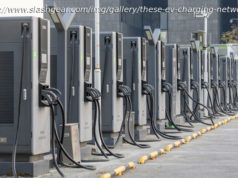Facebook’s plan to use large solar-powered high-altitude drones to connect areas of the world that traditionally haven’t had reliable internet access marked a..
Facebook’s plan to use large solar-powered high-altitude drones to connect areas of the world that traditionally haven’ t had reliable internet access marked a significant milestone on Thursday. Aquila, its first functional aircraft, completed its second successful test flight — and landed successfully, too. The first time around, Aquila’s flight resulted in a structural failure that affected the craft’s landing and resulted in an NTSB investigation.
Aquila’s second flight occurred on May 22, with take-off occurring just after dawn, and a total flight time of one hour and 46 minutes in the air. The drone rose to a flight ceiling of above 3,000 feet, and climbed at a rate that was double that of the first test flight — Aquila ascended at 180 feet/minute, which the team working on the project says was a result of a number of “refinements” made to the Aquila platform as a result of info gleaned from the first test.
Facebook notes that by design, the Aquila craft doesn’ t do anything terribly fast, despite the increases in climb rate; it only flies at about 10-15 mph when flying upwind, but it’s meant to provide consistent access to an area by staying over it for a relatively long time, so that’s actually advantageous. It can do this by sipping power generated by its solar gathering system — it runs on the same amount of power consumed by three blow dryers, Facebook says.
This second voyage for Aquila was also all about gathering data, specifically to help the team adjust the models they use to predict energy usage and optimize battery and solar system design, based on real-world data. These have, of course, been extensively modeled in simulation, but actually flying a drone in conditions similar to how it would be deployed when active commercially is the only way to get those details right.
Aquila also tested new spoilers it has incorporated into the design to help it increase drag and reduce speed, and it tested radio signal strength aboard the craft. Those added spoilers also help with landing, the process of which was revised based on the first flight’s issues.
Facebook says that this new process, which included locking the propellers horizontally to reduce damage, worked mostly as designed — though only one propeller on the craft actually locked horizontally, while the rest remained vertical until landing, as you can see in the clip above. All four motors stopped as intended, however, and the craft landed softly on a gravel surface, resulting in “a few minor, easily repairable dings, ” which is a much better result than they had the first time around. The team still intends to tweak this to help ensure it works better in the future.
The plan eventually is for Aquila to fly for up to 90 days at a time, offering internet access to an area 60 miles wide using the giant craft, which has a massive 113-foot wingspan.






